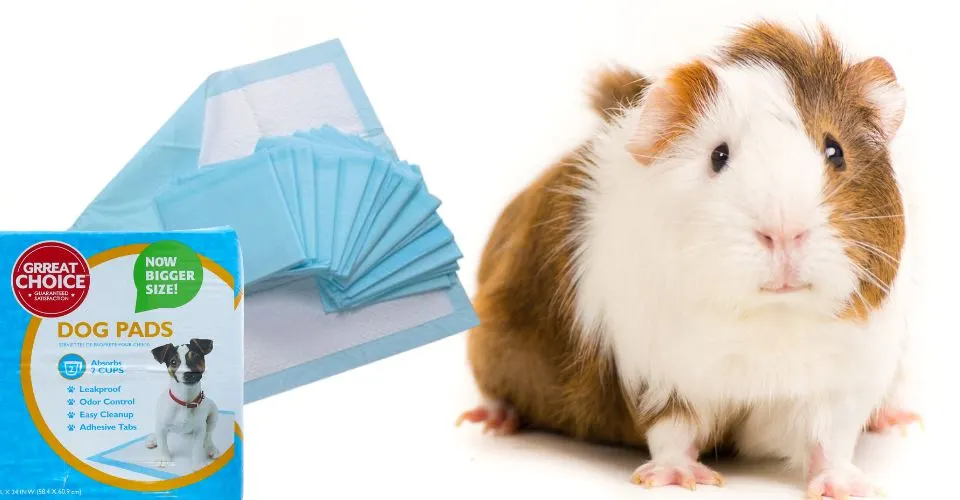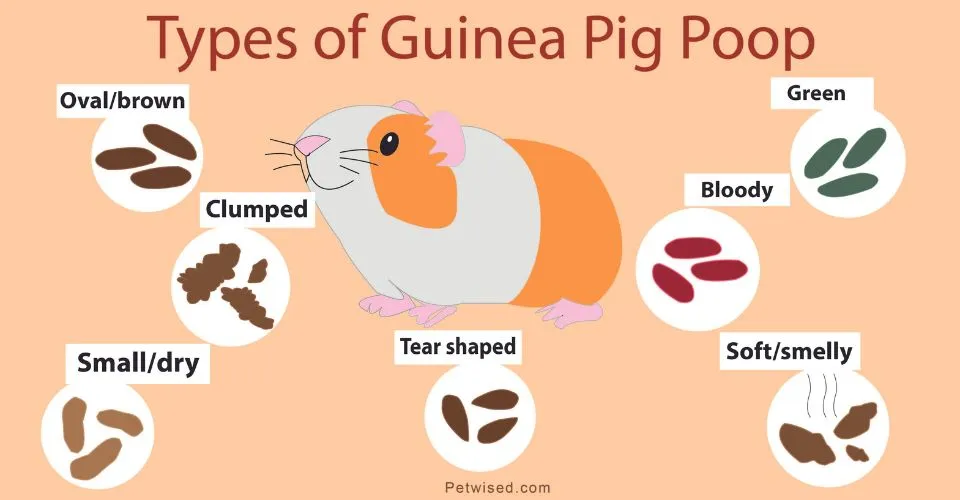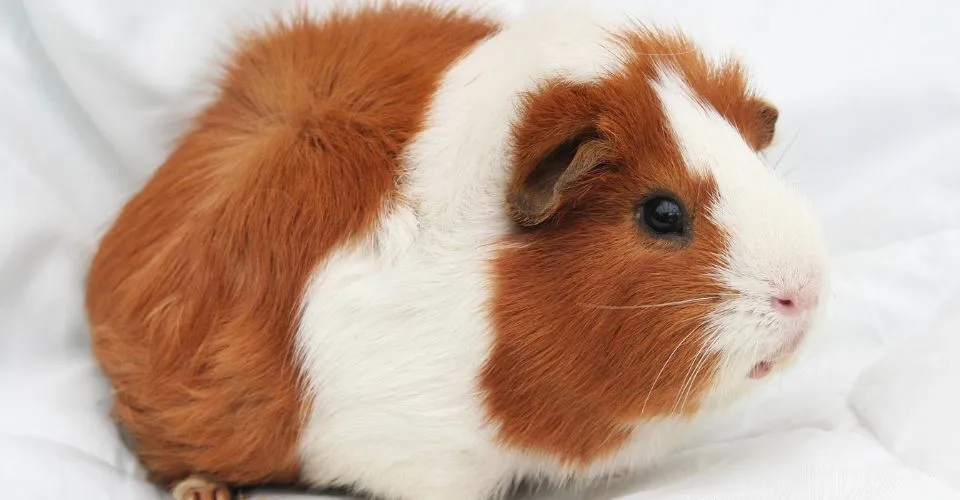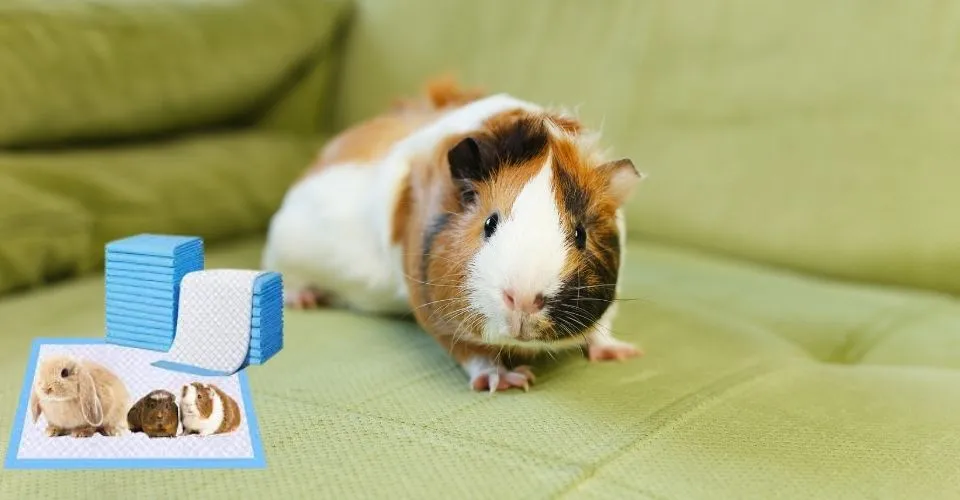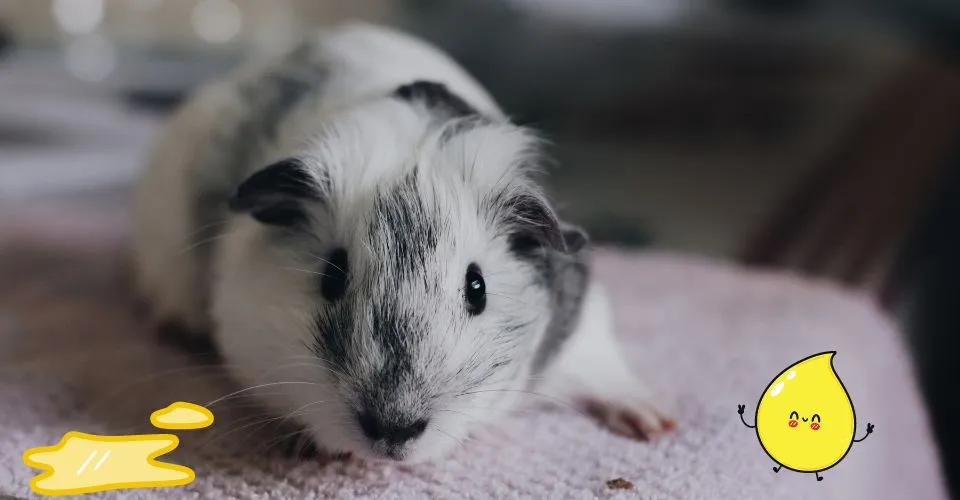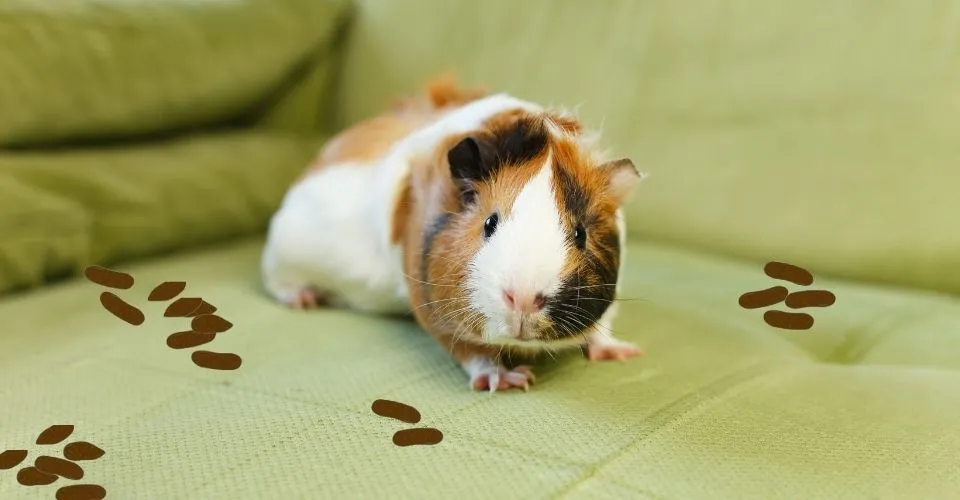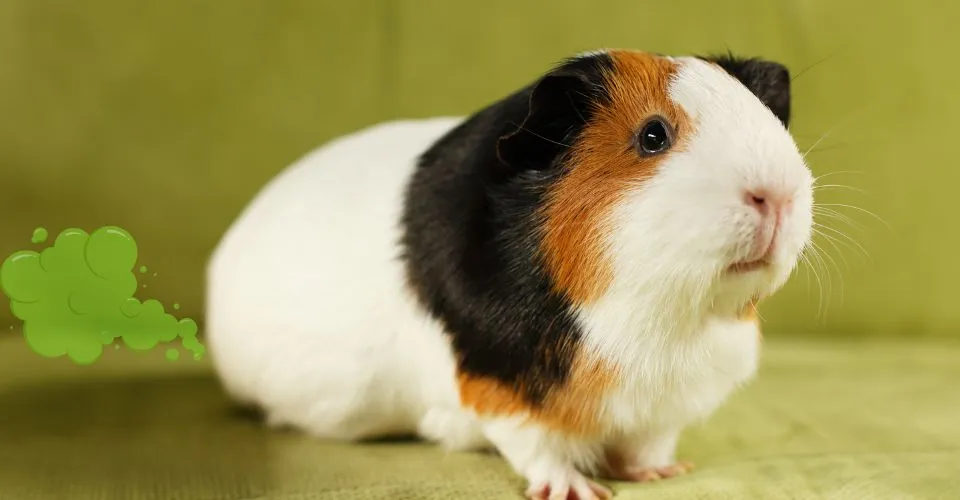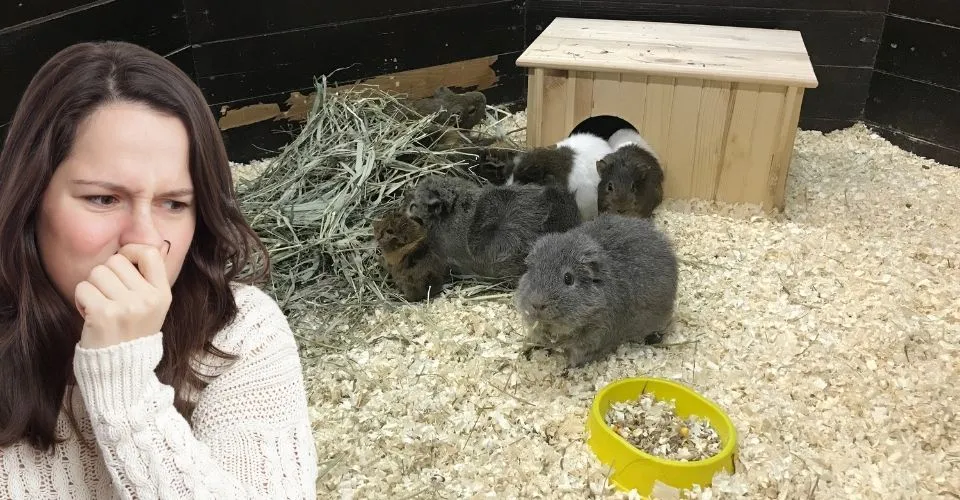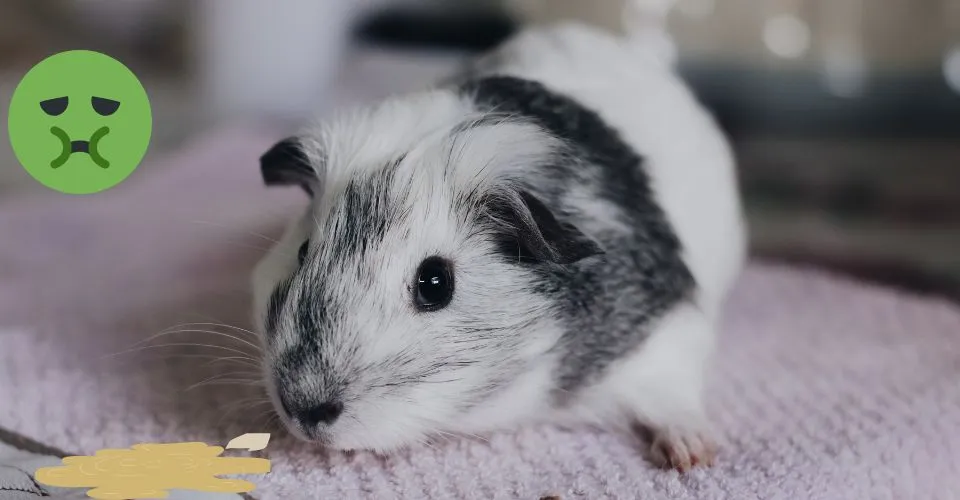Guinea pigs are delightful pets that add much-needed joy and companionship to many households. But guinea pigs pee and poop a lot, making it a challenge for novice guinea pig owners to keep their enclosures clean. Many owners have wondered whether puppy pads could provide an efficient way to maintain an ideal living environment for guinea pigs. If you are also thinking of using puppy pads in your guinea pigs’ cage, continue reading.
In this article, we will delve deep into the use of puppy pads as bedding options for guinea pigs and examine both their advantages and drawbacks for these small pets. Additionally, alternative solutions and safety concerns will also be covered to ensure their well-being. By the end of this piece, you will have a good idea regarding whether and how to use puppy pads for guinea pigs.
Understanding Guinea Pig Care
Before diving into using puppy pads for guinea pigs, it’s crucial that we gain a firm grasp on their care requirements. Guinea pigs are social and sensitive animals who require regular attention in captivity. Aside from providing balanced meals, fresh water, suitable habitat, and clean surfaces, keeping their surroundings free of contaminants is also crucial to their overall wellbeing and health.
Guinea pigs are well-known for their high metabolic rate, leading to frequent urination and defecation. As these tiny animals produce waste at such an alarming rate, it’s imperative that pet owners remain diligent in keeping their living environments hygienic – failure to do so could result in guinea pigs smelling bad, bacteria growth, and potential health concerns for your pet guinea pigs.
To ensure your guinea pigs receive the best care possible, it’s essential that a regular cleaning schedule be set in place for their habitat. This should include daily spot cleaning for visible waste removal as well as deep-cleaning sessions once per month or as required to sanitize it thoroughly. By understanding the significance of cleanliness in their care you can provide safe and hygienic living environments for these furry creatures.
Now that we understand guinea pig care requirements, let’s investigate using puppy pads as bedding to assist with maintaining cleanliness in their enclosures. By combining our knowledge of proper care for these delightful pets with appropriate bedding choices, we can create an environment that promotes their well-being.
Puppy Pads: What Are They?
Before we discuss using puppy pads for guinea pigs, let’s first understand exactly what these absorbent pads are designed to do. Puppy pads (sometimes referred to as pee pads or training pads) are absorbent pads designed specifically for dogs as a spot where they can urinate and defecate. They consist of various layers, from top layers with soft tread for pets’ comfort to core layers that absorb liquids quickly – all sealed off by waterproof bottom layers to prevent leaks onto floors!
Puppy pads are originally intended for dogs, but some guinea pig owners have turned them into bedding options for their little furballs. Their absorbent nature and ability to regulate odor make these pads attractive options for managing waste effectively. However, before adopting them as bedding it’s essential that their suitability be assessed along with any potential drawbacks or safety concerns.
Pros and Cons of Puppy Pads for Guinea Pigs
As with any decision involving your pet’s habitat, when considering using puppy pads as bedding for guinea pigs it’s essential to carefully evaluate both potential advantages and drawbacks.
Pros of Puppy Pads for Guinea Pigs
1. Absorbency
Puppy pads are designed to be highly absorbent, which makes them effective at soaking up guinea pig urine and odors in an enclosure and maintaining a cleaner and more hygienic living space for your pets. This ensures a healthier living environment for them!
2. Easy Cleanup
Including puppy pads as the bottom layer in their bedding, using them can make cleaning simpler. They help contain the mess while making it simpler to dispose of waste, saving both time and effort when maintaining cleanliness in their enclosure.
Cons of Puppy Pads for Guinea Pigs
a. Comfort and Enrichment
Guinea pigs thrive in environments that provide them with comfort and opportunities to express their natural behaviors. Puppy pads do not offer as much coziness for your guinea pig as other bedding options like shredded paper, aspen wood chips, or fleece and therefore may not provide ideal levels of coziness for them to curl up into a ball on them. Furthermore, puppy pads don’t offer enrichment opportunities like other materials that permit digging and exploration compared to bedding materials like these.
b. Chewing Hazard
Guinea pigs are natural chewers and may become bored and be tempted to nibble their peed pads out of boredom, potentially endangering their health if the pads contain additives or chemicals. Therefore, it is imperative that you monitor your guinea pig’s behavior to make sure they do not consume or chew on their pads.
c. Limited Absorption Capacity
Although puppy pads are absorbent, their capacity may be limited when dealing with frequent guinea pigs peeing. If the pads become saturated quickly due to the frequent production of waste by your animal, this could leave wet and unsanitary conditions within their enclosures.
By carefully considering these advantages and disadvantages, you can make an informed decision as to whether using puppy pads as part of your guinea pig’s bedding is the appropriate solution for you. When making this choice, remember to prioritize their comfort, health, and safety first.
Alternatives to Puppy Pads
Puppy pads may be effective ways of controlling guinea pig waste, but there may be other bedding choices that would better meet their specific needs and preferences. Here are a few to keep in mind:
a. Guinea Pig Pee Pads
Instead of using puppy pads, guinea pig owners should try using guinea pig pee pads. They do a wonderful job of soaking up the guinea pig pee and containing its odor. Guinea pig pee pads are specifically made while considering the health and safety concerns of guinea pigs in mind. To find the best pee pads, check out our comprehensive guide on the best pee pads for guinea pigs.
b. Shredded Paper Bedding
Shredded paper bedding such as plain white paper or newspaper is a popular choice among guinea pig owners because it provides soft, absorbent cushioning while being durable enough for burrowing and digging activities, providing enrichment as well as natural behavioral opportunities for your pets.
c. Aspen Bedding
Another alternative worth considering is Aspen bedding, a natural biodegradable material which offers excellent absorbency and odor control properties. While soft aspen shavings are suitable for guinea pigs, cedar or pine bedding should be avoided due to potential dangers to respiratory health.
d. Fleece Bedding
Fleece bedding has become increasingly popular with guinea pig owners in recent years, offering an easy, practical, and soft surface for their pet while simultaneously managing waste effectively. Fleece can provide soft comfort as it can be removed for easy washing and reuse while absorbent layers underneath can provide waste management solutions for you to add.
e. Hay Bedding
Guinea pigs require regular access to fresh hay for diet purposes, but it also makes an ideal bedding material. By simulating their natural habitat and encouraging foraging behaviors, using hay as bedding allows your guinea pigs to nestle into it as a natural substrate.
When considering alternatives to puppy pads for your guinea pig, make sure that their comfort, health, and safety come first.
No matter the choice of bedding option you select for your guinea pigs, it is vitally important to keep it clean by regularly spot-cleaning and providing new bedding as required. This ensures a hygienic living environment and promotes their overall well-being.
Safety Considerations for Guinea Pig Bedding
When selecting bedding for your guinea pigs, whether puppy pads or another option, safety must always come first. Here are some key safety considerations you should keep in mind when making your choice:
1. Avoid Toxic Additives
Ensure that any bedding material, from puppy pads to other materials, doesn’t contain any toxic additives or chemicals which could pose health risks to guinea pigs if consumed directly by them. Some scented or treated pads could potentially pose serious health risks when eaten by guinea pigs. Therefore, you should always opt for unscented and non-toxic options.
2. Respiratory Health
Guinea pigs can suffer from respiratory conditions, so selecting bedding that won’t emit strong odors or dust particles is of the utmost importance for good respiratory health. Cedar or pine bedding could release aromatic compounds that irritate their sensitive respiratory systems. So, you should go for low-dust or dust-free options to ensure long-term success!
3. Choking and Ingestion Hazards
Guinea pigs are curious little creatures, often eating their pee pads or other bedding material. Avoid items that pose a choking or digestive risk for them such as large pieces that could block airways or cause intestinal blockages. Therefore, you should always supervise your guinea pig closely and remove any bedding which becomes damaged or causes harm promptly.
4. Allergies and Sensitivities
Guinea pigs can be sensitive to certain materials, scents, or substances. So, be mindful of any allergic reactions or sensitivities your guinea pig may display when using specific bedding options. If any discomfort arises or adverse reactions appear when using certain materials for bedding purposes, switch out for alternative solutions immediately.
5. Regular Cleaning and Maintenance
No matter which bedding option you choose for your guinea pig’s enclosure, regular maintenance of cleanliness and hygiene are key to its well-being. When necessary, remove soiled bedding regularly from its cage to spot clean as necessary and conduct thorough cleanings at regular intervals to prevent a build-up of bacteria, odors, and potential health concerns.
By taking into account these safety considerations, you can ensure that the bedding chosen promotes their well-being while limiting risks or discomfort for them.
Final Verdict: Can You Use Puppy Pads for Guinea Pigs?
Puppy pads can make an effective part of guinea pig bedding, but they should be layered under a fleece or some other bedding to ensure that guinea pig chew or eat the pad. Though puppy pads offer absorbency and easy cleanup, safety must remain a top priority to prevent chewing hazards. Explore options like shredded paper or fleece as comfy alternatives and seek advice from experts if necessary to create a safe habitat for your guinea pigs.
